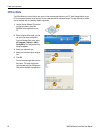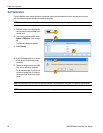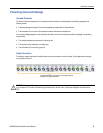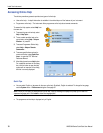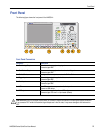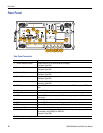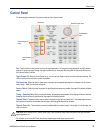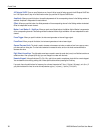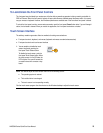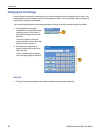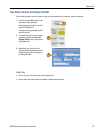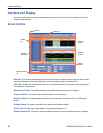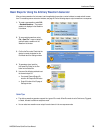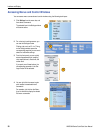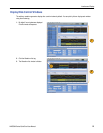
Control Panel
14 AWG5000 Series Quick Start User Manual
All Outputs On/Off. If one or more Outputs are on, they will all be turned off when you push the All Outputs On/Off but-
ton. If all Outputs are off, they will all be turned on when you push the All Outputs On/Off button.
Amplitude. When you push this button, the amplitude parameter of the corresponding channel in the Settings window is
selected. Amplitude is independent for each channel.
Offset. When you push this button, the offset parameter of the corresponding channel in the Settings window is selected.
Offset is independent for each channel.
Marker 1 and Marker 2 – High/Low. When you push one of these buttons, the Marker High or Marker Low parameter
of the corresponding channel in the Settings window is selected. Marker High and Marker Low are independent for each
channel.
Force Trigger. When you push this button, the instrument generates an internal trigger signal.
Force Event. When you push this button, the instrument generates an internal event signal.
General Purpose Knob. The knob is used to increase or decrease a set value or select an item from a pop-up menu,
pull-down menu or dialog box. Turn the knob clockwise to increase the value, and turn the knob counterclockwise to
decrease the value.
Digit Select Arrow Keys. The digit select arrow keys are used to move the under bar (cursor) to a field that contains an
editable number. After you specify the digit, you can change the number with the knob.
Numeric Keypad. Units prefix buttons (T/p, G/n, M/μ, and k/m) are used to complete an input with the numeric keypad.
You can determine the units by pushing one of these prefix buttons without pressing the Enter key.
If you push the units prefix buttons for frequency, the units are interpreted as T (tera-), G (giga-), M (mega-), or k (kiro-). If
you push the buttons for time, the units are interpreted as p (pico-), n (nano-), μ (micro-), or m (milli-).



